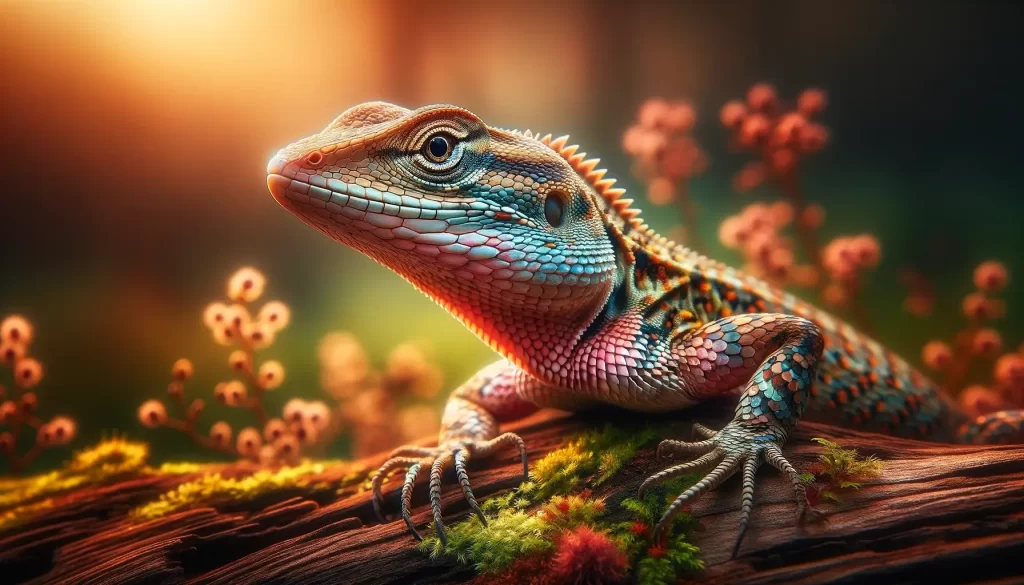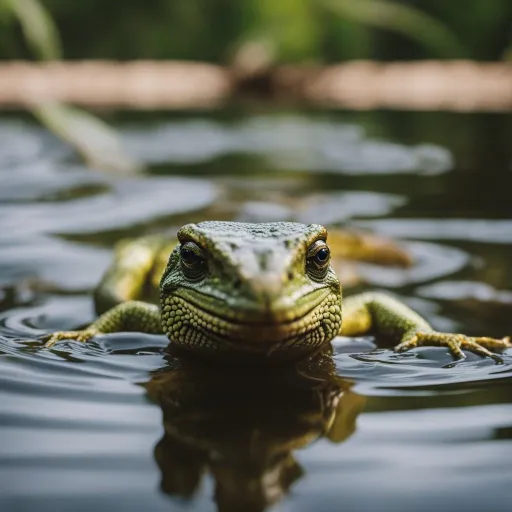
So, you’ve stumbled upon something peculiar in your backyard and you’re not quite sure if it’s a sign of a lizard’s presence or just some random debris.
Well, fear not, because we’re here to shed some light on the mysterious world of lizard droppings.
From their size and shape to their color and texture, this article will provide you with all the information you need to identify those little lizard remnants and satisfy your curiosity.
No need to play guessing games anymore – let’s uncover the secrets of what lizard droppings really look like.
Identification of Lizard Droppings
Size
Lizard droppings can vary in size depending on the species and the size of the lizard. Generally, they are small and compact, resembling small oval or cylindrical pellets. The size can range from a few millimeters to a few centimeters in length.
Shape and Texture
The shape of lizard droppings is typically elongated and tapered at one or both ends. They often have a smooth texture, but this can vary depending on the lizard’s diet and hydration levels. Fresh droppings may be softer and slightly moist, while older droppings can become dry and more crumbly.
Color and Appearance
The color of lizard droppings can vary depending on the lizard’s diet and species. In general, they can range from brown to black, with some variations in shades. The appearance can be solid or segmented, depending on the reptile’s digestive system. It is essential to consider these factors when trying to identify lizard droppings.
Contents of Lizard Droppings
Undigested Insects
Lizard droppings often contain undigested insect parts. As reptiles, lizards are primarily insectivorous and rely on insects as their main source of food. You may find remnants of wings, legs, or exoskeletons in their droppings, providing proof of their diet.
Plant Material
While lizards are known for their insect consumption, their droppings may also contain plant material. Some lizards, particularly herbivorous species, include plant matter in their diet. You may find traces of leaves, seeds, or even occasional bits of fruit in their droppings.
Calcium Deposits
Lizard droppings may contain white or pale-colored deposits, which are calcium deposits. These deposits are a result of the lizard’s metabolic processes and are commonly observed in reptile droppings. The presence of calcium deposits can be an indicator of the lizard’s overall health and diet.
Variations in Lizard Droppings
Species Differences
Different lizard species have unique characteristics when it comes to their droppings. Some species may have larger droppings, while others may have distinct colors or patterns. Understanding the specific characteristics of various lizard species’ droppings can help in their identification.
Droppings of Males and Females
In certain lizard species, there may be slight differences between the droppings of males and females. These differences can be attributed to variations in diet, hormonal factors, or reproductive activities. However, it is important to note that not all lizard species exhibit noticeable distinctions between the droppings of males and females.
Age-related Changes
As lizards grow and mature, their droppings may undergo changes. The size, shape, and color of the droppings can evolve with the lizard’s age. Younger lizards may have smaller droppings, while adult lizards may produce larger and more developed ones. It is important to consider the age of the lizard when trying to identify its droppings.
Factors Affecting Lizard Droppings
Diet
The diet of a lizard plays a significant role in determining the characteristics of its droppings. Lizards that primarily consume insects will have droppings with remnants of insect parts. On the other hand, lizards with a herbivorous diet will have droppings that contain plant material. The specific dietary preferences of the lizard will greatly influence the composition of its droppings.
Hydration
The hydration level of a lizard can affect the appearance and texture of its droppings. Water intake plays a crucial role in digestion, and insufficient hydration can result in firmer and drier droppings. On the contrary, a well-hydrated lizard may have softer and moister droppings. Monitoring the hydration of a lizard can provide insights into the condition of its droppings.
Health and Stress
The overall health and stress levels of a lizard can impact its droppings. When a lizard is unwell or experiencing stress, it may exhibit changes in its digestion and droppings. Illnesses, infections, or parasites can result in abnormal droppings, such as changes in color, consistency, or odor. Monitoring the health and stress levels of a lizard can help identify any concerning variations in its droppings.
Significance of Lizard Droppings
Environmental Indicators
Lizard droppings can serve as valuable environmental indicators. By examining the droppings in a particular area, one can determine the presence of lizards and their activity patterns. Lizard droppings can highlight the diversity of species in an ecosystem and provide insights into their feeding and habitat preferences.
Prey Availability
The composition of lizard droppings can indicate the availability of prey in a particular habitat. Droppings containing various insect parts suggest a thriving insect population in the area. This information can be useful in ecological studies and understanding the dynamics of predator-prey relationships within an ecosystem.
Territory Marking
Lizards may use their droppings as a means of marking their territory. Like other animals, they have scent glands that release pheromones, which can be present in their droppings. By depositing droppings in specific areas, lizards communicate their presence to other lizards and establish territorial boundaries.
Distinguishing Lizard Droppings from Other Animal Faeces
Bird Droppings
Lizard droppings can sometimes be mistaken for bird droppings due to their similar appearance. However, there are a few key differences. Lizard droppings tend to be smaller in size compared to bird droppings. Additionally, lizard droppings often contain remnants of insects or plant matter, while bird droppings usually consist of a more homogeneous paste.
Rat or Mouse Droppings
Distinguishing lizard droppings from those of rats or mice is crucial, as rodents can pose health risks. Lizard droppings are typically elongated and tapered, while rodent droppings are more pellet-like with blunt ends. Size can also help differentiate the two, as rodent droppings are generally larger than those of lizards.
Snake Droppings
Snake droppings can resemble lizard droppings due to their shape and size. However, snake droppings often have a smoother and more liquid consistency. Additionally, snake droppings may contain bones or other indigestible remnants due to their swallowing mechanism. Observing these differences can help in distinguishing between lizard and snake droppings.
Potential Hazards of Lizard Droppings
Bacterial Contamination
Like any animal waste, lizard droppings can carry bacteria that may pose health risks if proper hygiene is not maintained. Some bacteria commonly found in lizard droppings include Salmonella and Campylobacter, which can cause gastrointestinal illnesses if ingested or if hands are not properly washed after cleaning.
Parasitic Infections
Lizard droppings can also contain parasites, such as various types of worms or protozoa. These parasites can be harmful to humans and pets if transmitted through direct contact or ingestion. It is important to handle lizard droppings with caution and maintain good personal hygiene when cleaning or coming into contact with them.
Allergenic Reactions
In some individuals, exposure to lizard droppings can trigger allergic reactions. This can occur through direct contact or inhalation of allergenic particles present in the droppings. Symptoms may include coughing, sneezing, skin rashes, or respiratory distress. If you suspect an allergy to lizard droppings, it is best to consult a healthcare professional for proper diagnosis and management.
Methods of Cleaning Lizard Droppings
Safety Precautions
Before cleaning lizard droppings, it is crucial to take necessary safety precautions. Wear disposable gloves to protect your hands from potential bacterial contamination. Use a mask to prevent inhalation of dust or allergens. It is also advisable to clean the area in a well-ventilated space to avoid excessive exposure to harmful particles.
Removing Fresh Droppings
For fresh lizard droppings, start by using paper towels or disposable cloths to carefully pick up the droppings. Place them in a sealed plastic bag to prevent any further contamination. Wipe the affected area with a mild disinfectant or a mixture of water and vinegar to sanitize the surface. Dispose of the cleaning materials properly after use.
Cleaning Dried Droppings
When dealing with dried lizard droppings, it is important to avoid stirring up dust or particles that may be present. Moisten the affected area with water or a mild disinfectant to reduce the chances of airborne particles. Use a scraper or stiff brush to gently remove the dried droppings, taking care not to damage the surface. Follow the process with thorough cleaning using a disinfectant solution.
Preventing Lizard Droppings in Specific Areas
Home
To prevent lizard droppings in your home, ensure that all windows and doors have proper screens or barriers to prevent lizards from entering. Seal any cracks or gaps in walls or doors, as lizards can squeeze through small openings. Regularly clean and sanitize areas prone to lizard activity, such as basements, attics, or crawl spaces.
Garden
In a garden setting, consider implementing natural deterrents such as mothballs or repellent plants that lizards find unappealing. Keep the garden clean, removing any excess debris or clutter that may attract lizards. Erect physical barriers such as fences or mesh around specific areas to restrict lizard access.
Outdoor Living Spaces
To prevent lizards in outdoor living spaces, ensure that openings or gaps in walls, fences, or patio structures are sealed. Regularly clean and maintain outdoor furniture and fixtures to minimize hiding spots for lizards. Avoid leaving food or water sources uncovered, as this can attract lizards and contribute to their droppings in the area.
Final Thoughts
Identifying lizard droppings can provide valuable insights into the presence, diet, and behavior of lizards in a given area.
Understanding the characteristics and contents of lizard droppings can help distinguish them from other animal feces and assess potential hazards associated with their presence.
By implementing preventive measures and maintaining proper hygiene, you can minimize the impact of lizard droppings in specific areas and create a more lizard-friendly environment while ensuring the health and safety of yourself and others.



